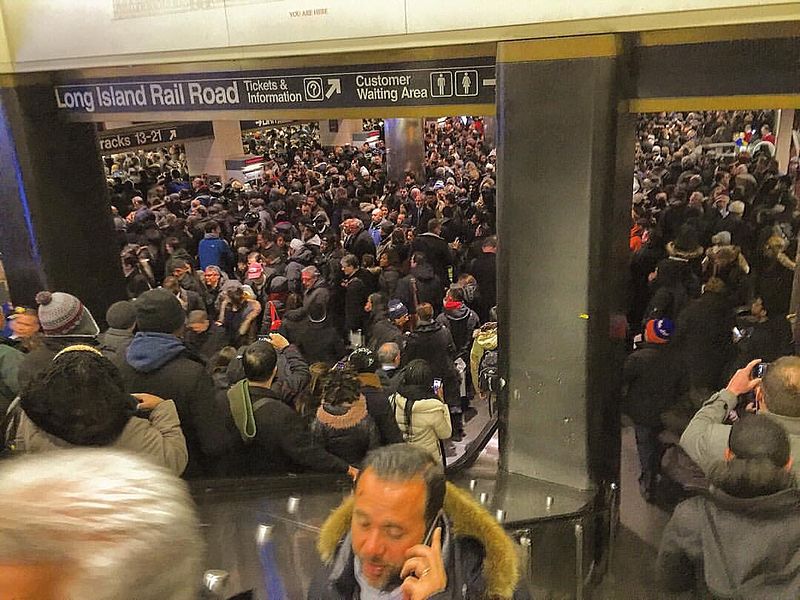Integrated Planning Can Help Free New York Transit From Dependence on Trump
The New York region can’t count on Washington to fund its transit mega-projects.

The Trump administration decision to blow up the federal government’s agreement to pay half the costs for the trans-Hudson Gateway tunnel should bring home one point: The New York region can’t count on Washington to fund its transit mega-projects.
The corollary is that New York and New Jersey have to get smarter about what they build. To do so will entail a big departure from the current project selection process, which is driven by political urges to satisfy egos and narrow constituencies, not by the need to serve the most transit riders as efficiently as possible.
Every aspect of transit planning — fares, schedules, equipment, infrastructure — affects every other aspect. Changing the fare system, for example, could lead to a change in ridership on different lines, shifting which routes are at capacity and require capital investment in new infrastructure.
When planners only look at one aspect of transit planning in isolation, they can make mistakes like recommending the wrong project or overlooking cheaper alternatives. A complex undertaking like the Gateway tunnel and the related overhaul of Penn Station is a minefield for these types of mistakes. Integrated transit planning can help navigate it.
Because integrated planning is difficult, there is a German and Swiss principle for what to prioritize: Organization before electronics before concrete. “Organization” refers to coordinating schedules, fares, and routes across different parts of the region, and across different agencies. “Electronics” is shorthand for equipment like trains and signals. “Concrete” means major infrastructure like new tunnels. Organization is basically free, electronics cost some money, and concrete is the most expensive.
While the portion of the Gateway project that’s causing alarm right now is the rail tunnel (inexplicably projected to cost $13 billion), the tunnel is part of a bigger undertaking centered around Penn Station.
Looking at Penn Station, it’s immediately clear why organization is so important. One reason Penn Station is unpopular with passengers is that it is so confusing: It is difficult to know how to get to one’s train. This is a problem of organization, not concrete.
The blame for Penn Station’s poor wayfinding belongs to the lack of integration between Amtrak, the LIRR, and New Jersey Transit. Each railroad’s turf only has information about track numbers and departure times for its own trains, and each has separate ticketing machines, too. Combined ticketing and departure boards would make the station easier to use, reducing the need to build a new train hall at Moynihan Station at the cost of $1.6 billion.
If New York’s railroads coordinated on electronics — specifically, rolling stock — it would be easier to integrate Penn Station into a through-running regional rail network. Here’s why.
All trains through Penn Station must be electric rather than diesel-powered, because diesel fumes are toxic in enclosed underground spaces. But the trains can be pulled by an electric locomotive (like Amtrak) or have self-propelled cars, called “electric multiple units” or EMUs (like the subway, LIRR, and Metro-North).
EMUs outperform electric locomotives. They accelerate faster, which allows them to run at higher average speed on lines with many stops. They can also climb steeper grades owing to their better acceleration: 4 percent grades are no big deal for them, whereas today’s standards for electric locomotives call for 2 percent grades.
It would be possible to build two new rail tracks from the existing Penn Station platforms to the east, toward Grand Central or Long Island, if they were built at slightly steeper grades than 2 percent, according to Foster Nichols, a former manager at the LIRR who oversaw construction at Penn Station in the 1990s. The steeper grades would enable tunnels to be excavated around Midtown Manhattan’s complex underground infrastructure.
But NJ Transit uses a mix of locomotives and EMUs. If it continues to run locomotives, those tracks would be unusable for the agency, negating the through-running capability. Failure to coordinate on rolling stock has consequences.
Instead of investing in organization and electronics, the Gateway package calls for condemning the block south of Penn Station to add tracks at a new complex dubbed “Penn South,” at a cost of $7 billion. In its Fourth Regional Plan, RPA proposes using Penn South as the departure point for a pair of tracks connecting east to Long Island. These two tracks would cost another $7 billion, and are only necessary because of the LIRR’s unwillingness to share station space.
Nichols says Penn South has value because it allows more flexibility. Railroads can choose to run either EMUs or locomotives if the grades are shallow. He also mentioned flexibility of development above the tracks: Penn South makes it easier to redevelop Penn Station without operational constraints.
However, the organization-before-electronics-before-concrete principle means that the region should take the opposite approach. Instead of spending $7 billion on a train station to allow more flexibility in schedules and rolling stock, schedules and rolling stock should allow more flexibility in threading tunnels between older infrastructure, saving billions.
The longer the New York region clings to the old, uncoordinated way of transit planning, the harder it will be to complete the major transit projects it needs.





